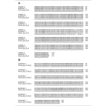
Photo from archive.org
Abstract An intensive census, extended over a period of approximately three and a half years, October 2017– May 2021, was conducted in the remaining green areas of the Macau SAR… Click to show full abstract
Abstract An intensive census, extended over a period of approximately three and a half years, October 2017– May 2021, was conducted in the remaining green areas of the Macau SAR in order to provide an updated status of the biodiversity of longhorn beetles in this region. This insect group includes more than 36,000 species worldwide, subdivided into four families of mainly xylophagous or saproxylic insects, the Vesperidae, Oxypeltidae, Disteniidae, and Cerambycidae. They are of key importance in agricultural and forestry science, and are often used as an indicator of forest habitat health. A total of 52 species was recorded during this census, 2.6 times more than previously reported in the literature for this area. However, recorded abundances and frequency of occurrence for the various species were remarkably low, and of the 20 species previously reported for the region, some prominent ones remained unaccounted for. Among others, these include Batocera horsfieldii (Hope, 1839), Apriona rugicollis Chevrolat, 1852 [previously incorrectly reported as Apriona germarii (Hope, 1831)], Aristobia reticulator (Fabricius, 1781) [previously reported as Aristobia testudo (Voet, 1778)] and Imantocera penicillata (Hope, 1831). It is hypothesised that this may be related to the ongoing manipulation of the natural vegetation of the Macau SAR, which is rapidly being converted to plantations, city parks, and gardens. In particular, dead or dying trees and lower tree branches are systematically removed in order to improve the aesthetic appearance of these green areas. However, this process is also depriving xylophagous and saproxylic species of their essential habitats.
Journal Title: ZooKeys
Year Published: 2021
Link to full text (if available)
Share on Social Media: Sign Up to like & get
recommendations!